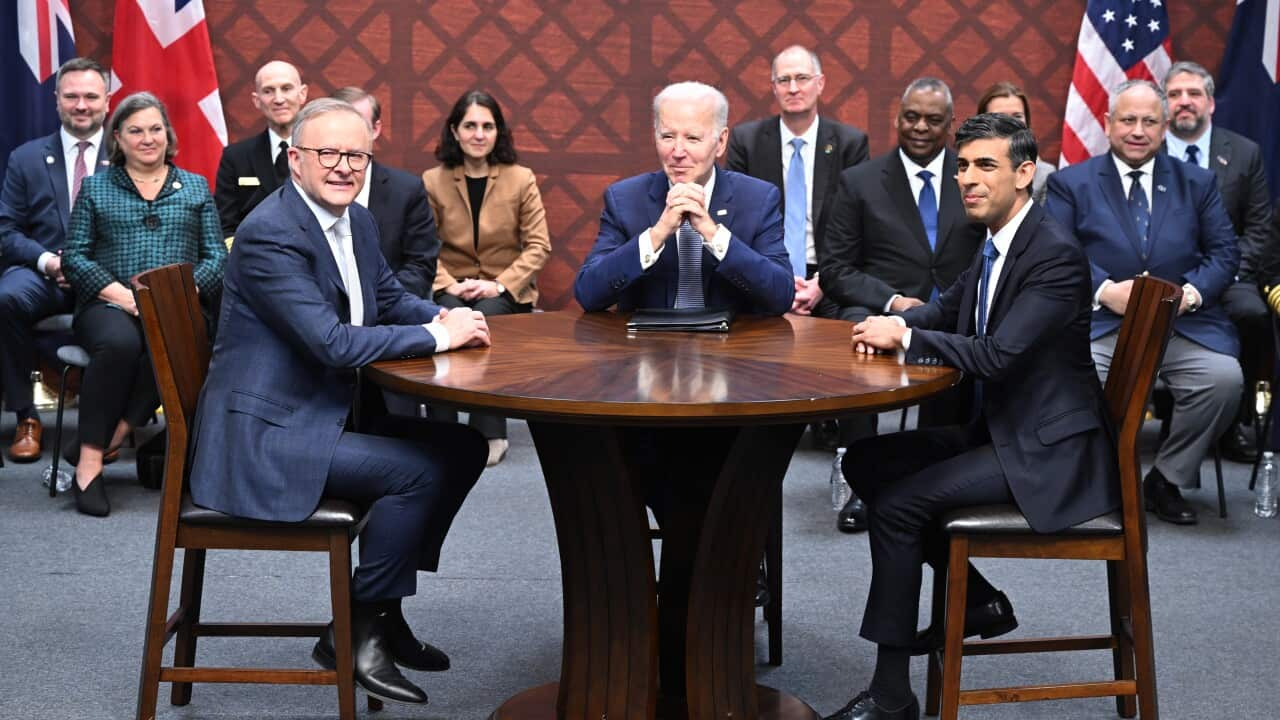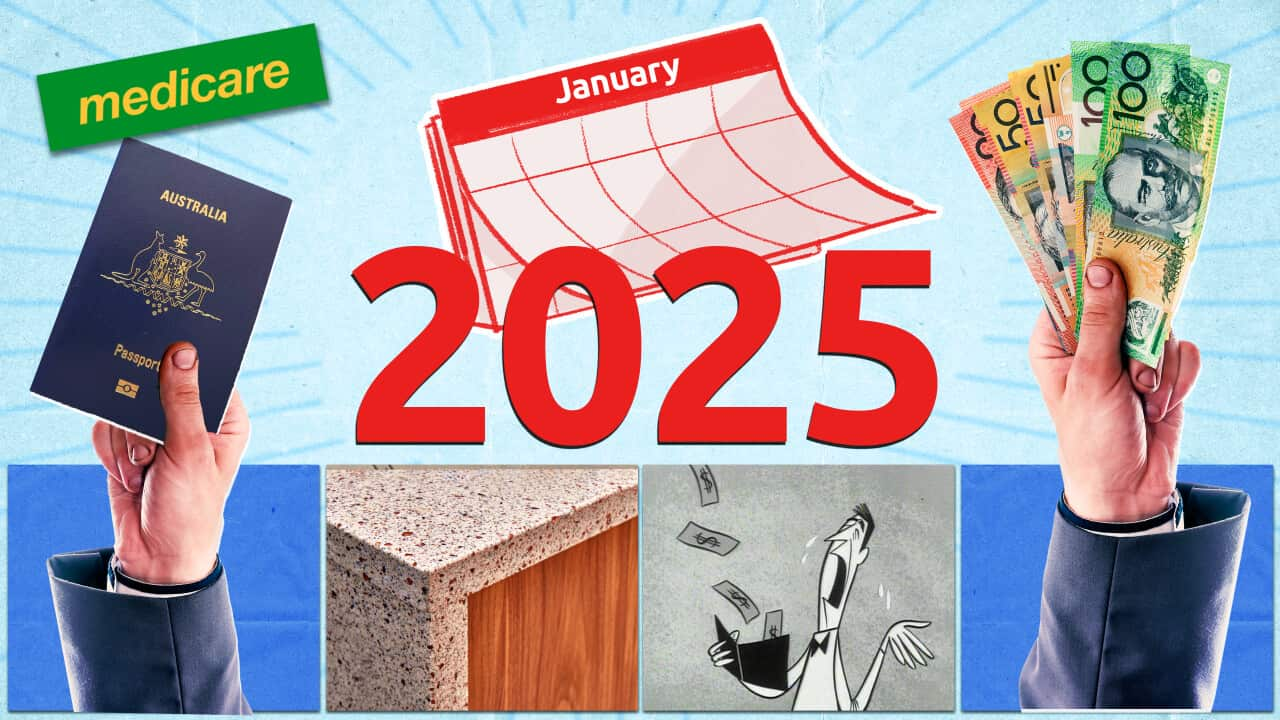KEY POINTS:
- Australian submarine program under AUKUS could cost $368 billion by the mid-2050s.
- Australia will be forced to deal with nuclear waste on home soil.
- AUKUS leaders announce interim plans for Australian submarine capability.
Anthony Albanese has declared the arrival of a "new dawn for Australia's defence policy".
The prime minister, standing side-by-side with US President Joe Biden and UK Prime Minister Rishi Sunak, on Tuesday unveiled the first stage of the AUKUS pact, signed in 2021.
The agreement is a major shake-up to Australia's submarine capabilities, and will see more American and British forces descend on the country.

An artist's impression of what the AUKUS-class submarine will look like. Credit: Supplied by Defence.
So what's been announced, how much will it cost, and what else could the money have been spent on?
What's been announced?
Long-term submarine capacity, short-term protection.
Up to eight AUKUS-class submarines, based on a British design, will be built in Adelaide and will roll off the production line from the early 2040s. It’s envisaged one vessel, to be equipped with a US vertical launch system, will be produced every three years.
That's a long time away, so the three countries have announced some interim measures.

Australia will also purchase three American-made Virginia-class submarines, provided that's approved by the US Congress. If so, they won't arrive in Australia until 2032.
This year, Australian forces will start training on US nuclear-powered ships to build their capacity to operate such vessels independently down the line.
How much will it cost?
It's an eye-watering figure.
The program is set to cost Australian taxpayers between $268 billion and $368 billion by the mid-2050s. That estimate includes the construction and sustainment of the boats and all associated costs, including investing in capability in the US and UK.
Over the forward estimates (2023-24 to 2026-27), the program will cost $9 billion. That's set to reach $50-58 billion within a decade.

And Defence says extending the life of Australia's Collins-class submarines, made necessary by the AUKUS pact, could cost more than $6 billion over a decade.
But Treasurer Jim Chalmers insists Australia "can't afford not to do this", while also stressing the deal will create 20,000 direct manufacturing jobs in Australia.
What does this mean for Australia's nuclear capability?
Waste, not weapons.
Mr Biden was at pains to stress the submarines will be nuclear powered, but not nuclear armed.
"Australia is a proud non-nuclear weapons state and has committed to stay that way," he said on Tuesday.

US President Joe Biden insists the deal is not a pathway to Australia having nuclear weapons. Credit: Leon Neal / Getty Images
The waste will be stored on a Defence-run site, to be decided this year.
What could that money fund elsewhere?
A lot.
Most policy proposals aren't costed into the mid-2050s, so we'll take the $58 billion figure the government says this proposal could cost over ten years.
That's excluding the additional costs of cancelling the French submarine deal and maintaining the Collins-class submarines for the decade, and the potential economic flow-on effects of the policies.
It's also worth noting that the spending is backloaded; $58 billion in the first decade means that more than $300 billion is likely to be required over the following two.
Modelling from the Grattan Institute shows $58 billion could cover the cost of boosting both the JobSeeker and Parenting Payment by $75 per week, with around $13 billion in change.

A $75 per week increase to the JobSeeker and Parenting Payments would cost $10 billion less over ten years. Source: SBS News
Taking a different route, Grattan says the AUKUS money would be able to fund a Medicare-style universal dental system and leave $2 billion in change.

A universal dental program would cost $2 billion less than the AUKUS deal over ten years. Source: SBS News
Those estimates are based on the most recent budget papers, assuming the average growth of expenditure over the next three years is maintained for a decade.









